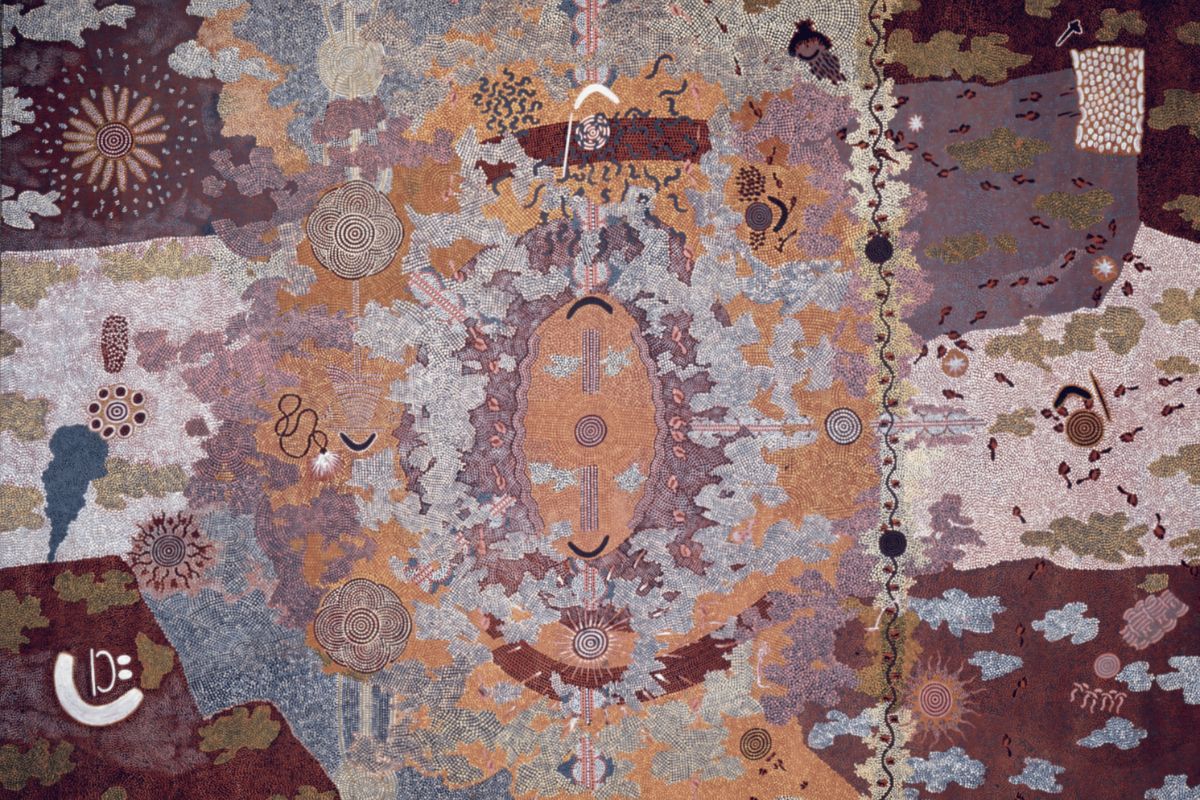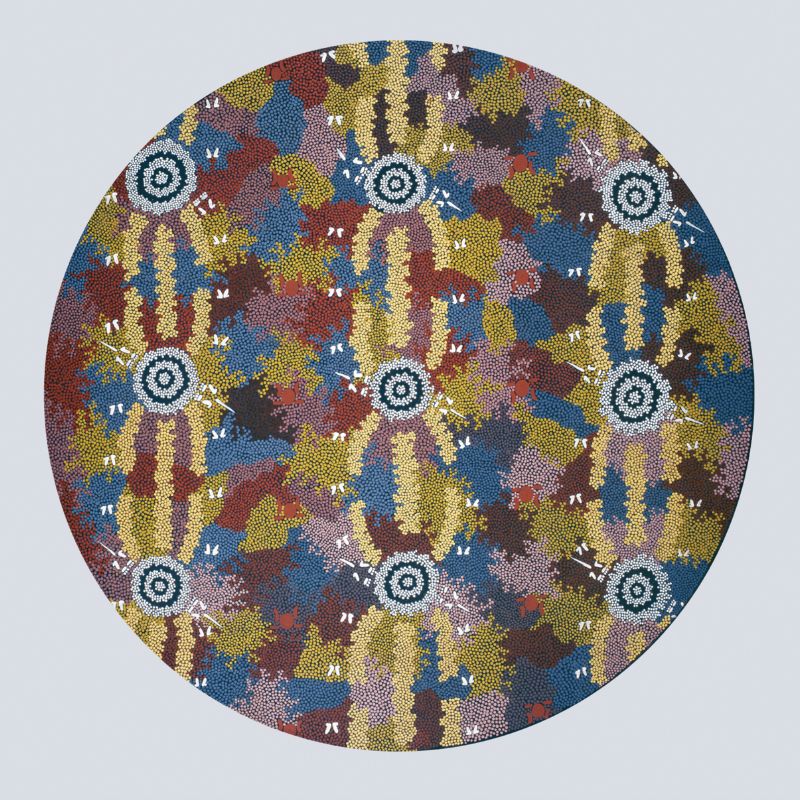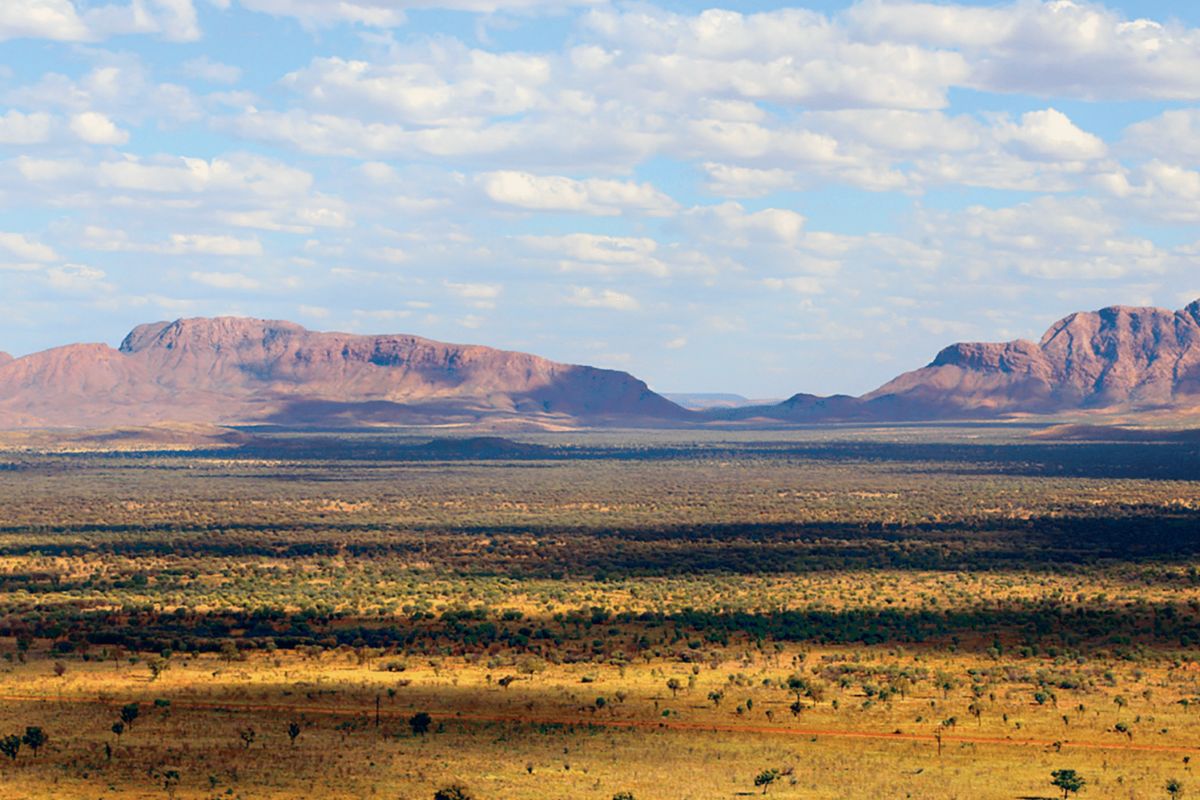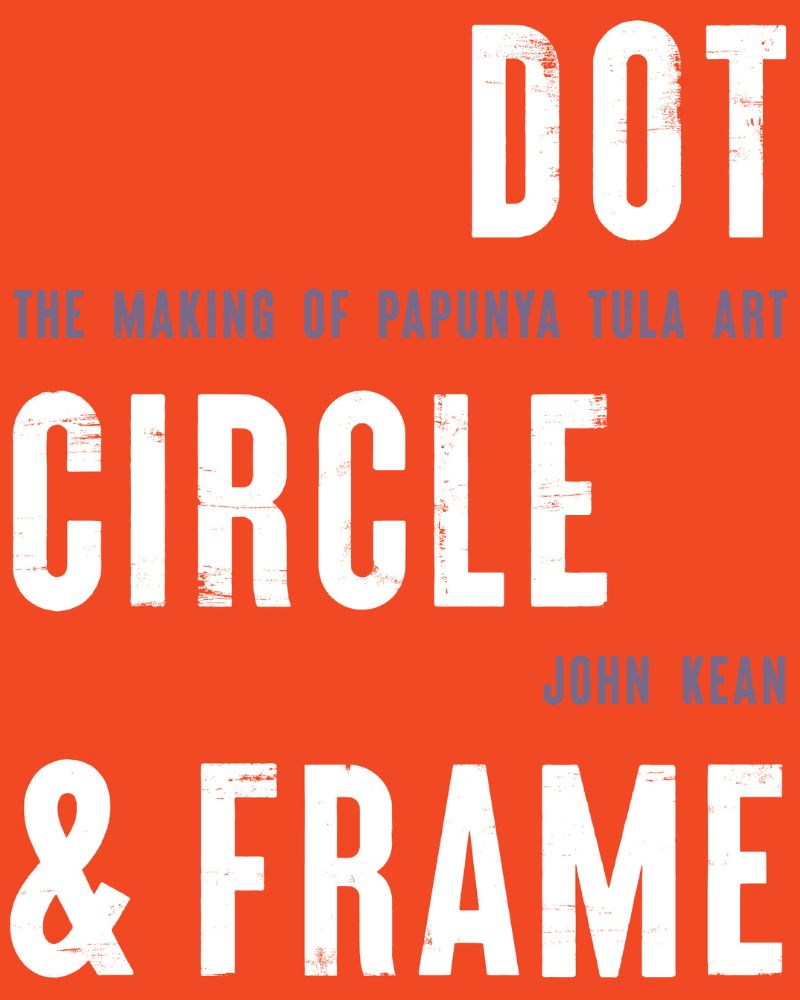In Dot Circle and Frame: The Making of Papunya Tula Art
Most people interested in Aboriginal art know a little about Papunya and the Geoffrey Bardon story, and several books carry this narrative. In Dot Circle and Frame: The Making of Papunya Tula Art by John Kean, tells a far richer and more complex story. Terri-ann White of Upswell Publishing describes this authoritative book on the emergence of a great contemporary art movement.
How did this project come about?
I first met John in the late 1980s when he was a curator at the Fremantle Arts Centre. I started working in publishing in around 2006. He followed what I was doing. He was enrolled in a Ph.D. thesis at the University of Melbourne about the making of the Papunya Tula art movement. He’d intended to send it to me for possible book publication.
At the end of 2019, the University shut down UWA Publishing. I was made redundant as part of that drama. In December 2020, I announced my new venture, Upswell Publishing. The first email I got, and I got a lot of them, was from John saying, "Hooray, there's a potential now for my book to go to somebody who will take care of it."
We had long discussions at the beginning of 2021. It's a massive project: it is the lifework of a curator and art theorist and is extraordinarily detailed. It is scholarly at the thesis level but very readable at the book level. It tracks many issues about this particular art movement in exquisite detail. It initially swamped me and my editor and designer in dealing with this material and his ambitious ideas for what the book might look like.
What did you set out to achieve?
I set out to achieve his ambition. As simple as that. This book comes from John as a young man, an art school graduate, going up in 1977 to Papunya Tula to do a specific job. His role was to sketch schematically the design of early paintings for their certificates of authenticity. John was doing that work in a remote place, with the pictures slowly going out into the world.
There were a lot of paintings, but not as many buyers as there are these days. He found and developed an understanding at a very high level of the elements of each artwork. He also became acquainted with the approach, the styles and the influence of each of the thirty active painters up there who worked on canvas with acrylic paints.
John has this unbound drive to make a book of substance. This was infectious. So many books about Papunya Tula's art tell a story about how the movement developed. They usually have heroic figures in the forefront, and they are typically white men. What John does is flip this narrative. He sheds light on a whole host of extra players, but central to his thesis are four heroic men from that place who form something astonishing.
John focuses on these four men he knew and developed a great relationship with by engaging with their art and lives. In the background of all that is a fifth figure, Albert Namatjira. He is the forebear of the work these artists were making in the 1970s.
He shows how they took that astonishing imagination and grounding of Namatjira into their own making and describes the other elements they brought to their work. One of them is cowboy culture, another is comics, and there is a range of other modernist elements in there that position their work in a longer artistic frame. He uses Picasso, Braque, and Roy Lichtenstein to show what's happening in some paintings.
What were the challenges?
I don't think John would mind me saying this, but this is his first book. It's his grand opus. He has been storing this material and knowledge for a long time. He feels a deep obligation to the community and has done so since 1977 through a number of generations. The challenges were trying to reign in some of the material and trying to find an endpoint to what he knows because it's tough to start a project like this with both text and image and a lot of reference material in footnotes at the back end of the book, to stop and start, to keep adding. When someone is as immersed as John, things can naturally occur and get complicated.
For instance, a new painting was found at the end of our production period. It was put up for sale in Melbourne. It was a significant finding. It had been sitting in a suburban house for 50 years. It was extraordinary. It sold for a huge amount of money and hadn’t been part of this book because it hadn't been discovered. John pleaded to include it. All of those changes make significant differences in production.
I worked, as did John, the editor, and Peter Long, an incredible designer in Melbourne, through the Christmas and New Year breaks to get to print deadlines.
The challenge is the materials. They're the joys, pleasures, and challenges. John had lived it for a long time but probably had yet to realise the implications of making changes so late in the piece.
How did the information-gathering process work?
John has travelled back to those lands regularly over all of the years since 1977. He has the language and relationships; he stayed on the case and is a trusted part of that community.

How did the information-gathering process work?
John has travelled back to those lands regularly over all of the years since 1977. He has the language and relationships; he stayed on the case and is a trusted part of that community.
Academic writing is often not very accessible. Did the consultation process influence the choice of a more accessible language?
Yes, I think so. A strong art history and theory thread is still running through the thesis. This theory element is skillfully handled, so it's not overwhelming. It's a very readable book. It's a friendly read. A PhD is often a good vehicle for people to do a huge project like this.
Can you describe the relationship between your role and the writers/information gatherers?
This book is about trust. The book was probably up to 300 pages, and now it's closer to 400. I went with the author to expand what was possible. We've got 70 pages of plates in the middle of the book and the first and second sections: before and after the Papunya Tula movement. The relationship is one of trust, but it's also one of generosity. There are cost implications in making a book that much bigger. All the layers of editing, proofreading, design, and print costs make it a substantial investment.

What are you most proud of about this project?
The look of it. It has come together beautifully, and it's a distinctive book when you see it on a bookshelf. Recently, I was in Brisbane, Sydney, and Melbourne, going into bookshops and seeing the big blue book (Sun & Shadow: Art of the Spinifex People, edited by John Carty and Luke Scholes) and the big red book (In Dot Circle and Frame: The Making of Papunya Tula Art by John Kean) in all sorts of bookshops makes me feel enormously proud. It's hard work to get bookshops to take on big art books. This book launched at the Northern Territory Writers Festival in Alice Springs in May. It was the bestselling book for that festival.
The launch was astonishing. It was ceremonial, with some of the Papunya men. What does this book mean to the communities?
A huge amount. Someone in that community recently answered a question about a painter's work. They said, "Oh, hold on. I just have to go and look at the Red Book to find out the answer for you". That is fabulous. It is now called the Red Book!
What aspect of the project did you enjoy most?
I employed Peter Long, the book designer. I've worked with him as a freelance designer on many of my book covers over the years. This book is such an immersive project, and we worked well together. He came up with a wonderful way to make these pages work. They are miraculous and wonderful. I love everything that he did. He came through with some early ideas that had a boldness of the design. We put the plates on black matte paper, and I think it works. Getting those early drafts and concepts from Peter was my moment of thinking– this will be a significant book.

Can you talk to me about the legacy of this book?
This book remains a legacy for Papunya, the larger Aboriginal art community and Australian art history. This time in history has been one of the most transformative moments in the 20th century and beyond, so it's reframing the whole Australian art historical project. It is a bold statement, but it does reframe and give agency to the artists. That's part of what happens. It's a book of wonder, a profound observation and curiosity by the author.
This is a men's story. In the 1970s Papunya story, the men were the main game. However, the book ends with a painting by Candy Nelson Nakamarra. The last painting in the book is by a contemporary woman. That is appropriate because, while men may have launched the movement, female artists from Aboriginal communities across Australia have embraced it. The inclusion of this artwork is about the further maturing of this art movement.
Order Book:
Upswell Publishing: In Dot Circle and Frame: The Making of Papunya Tula Art
View:
Papunya Aboriginal Art & Artists - Japingka Gallery
Read:
Dr George Tjapaltjarri Interview
Links:
Papunya - Wikipedia
Papunya Collection - National Museum of Australia


